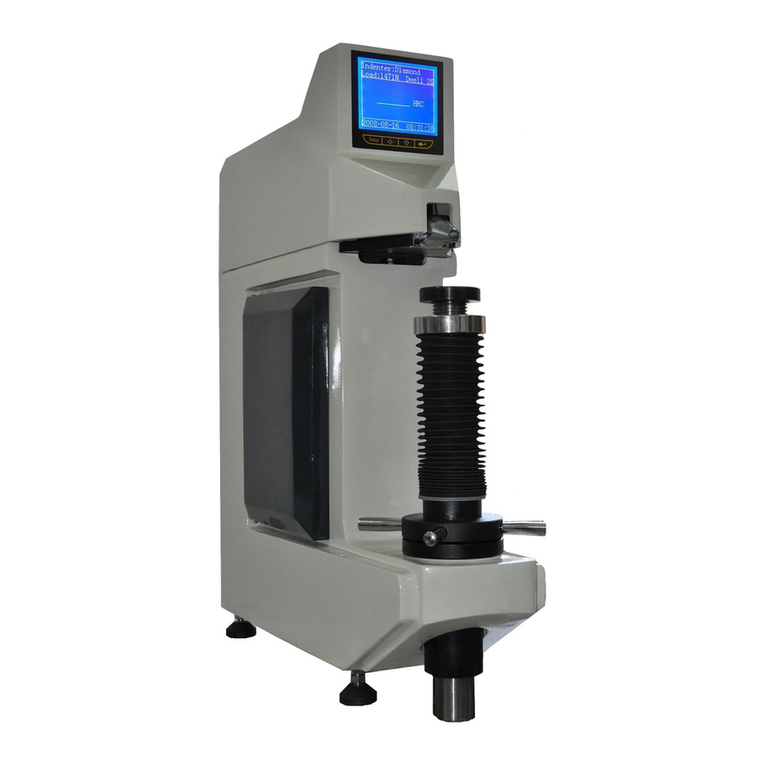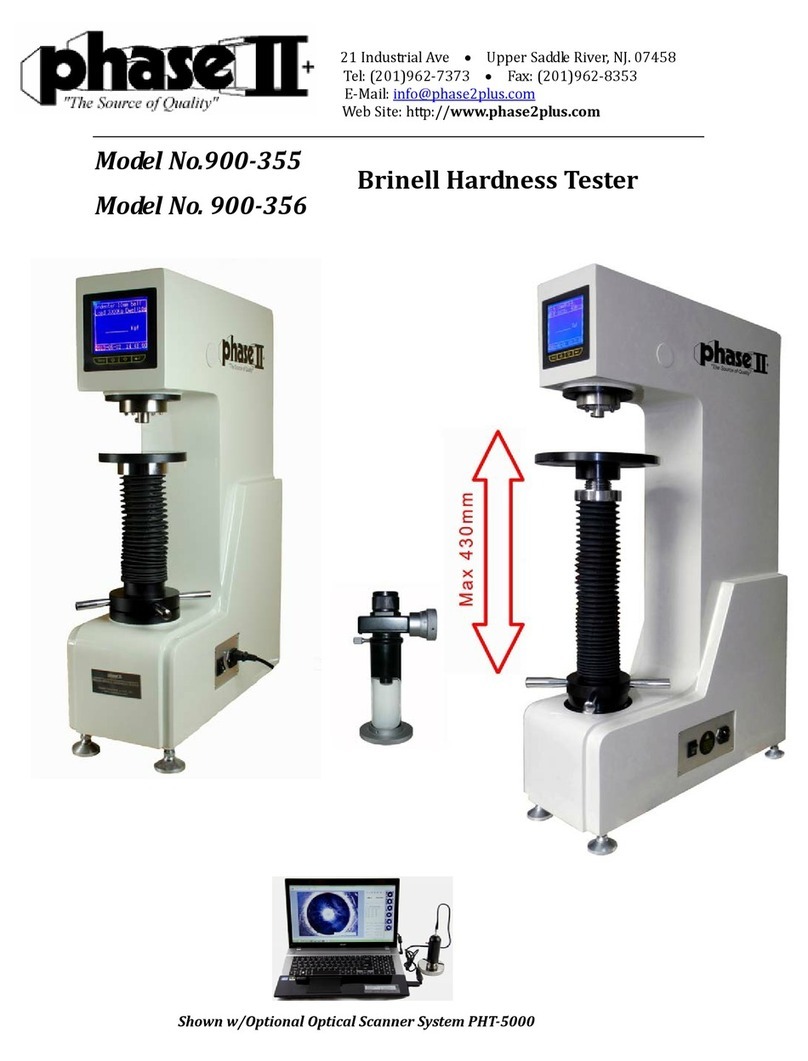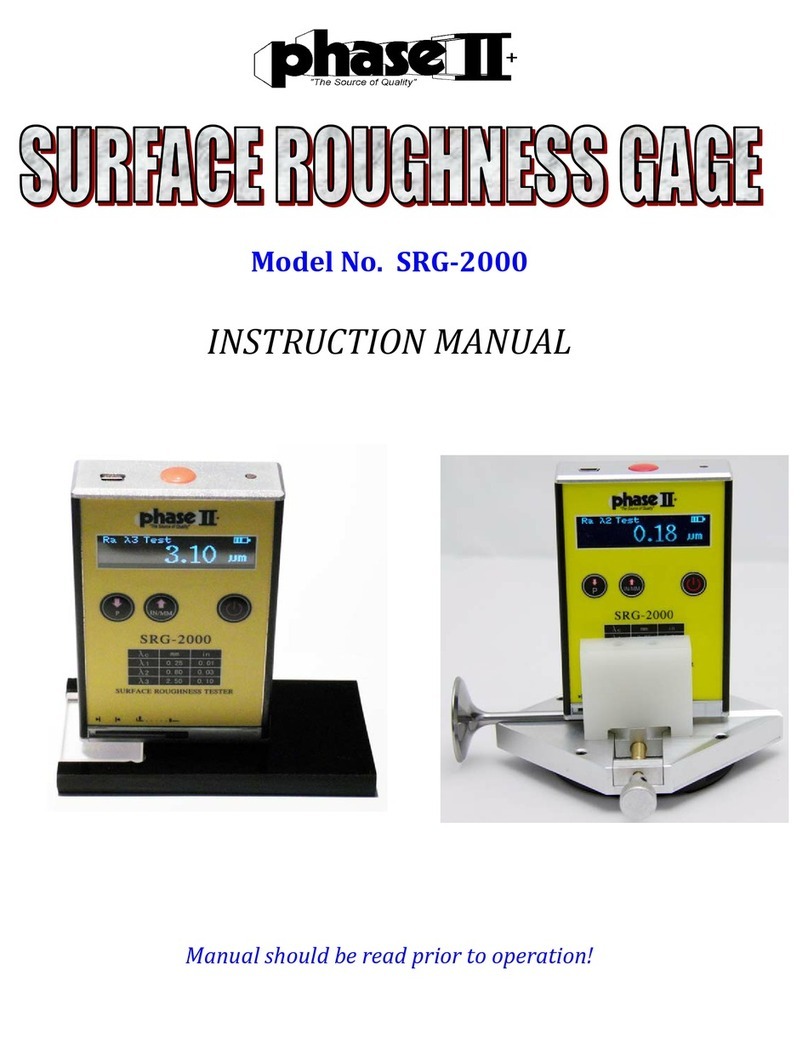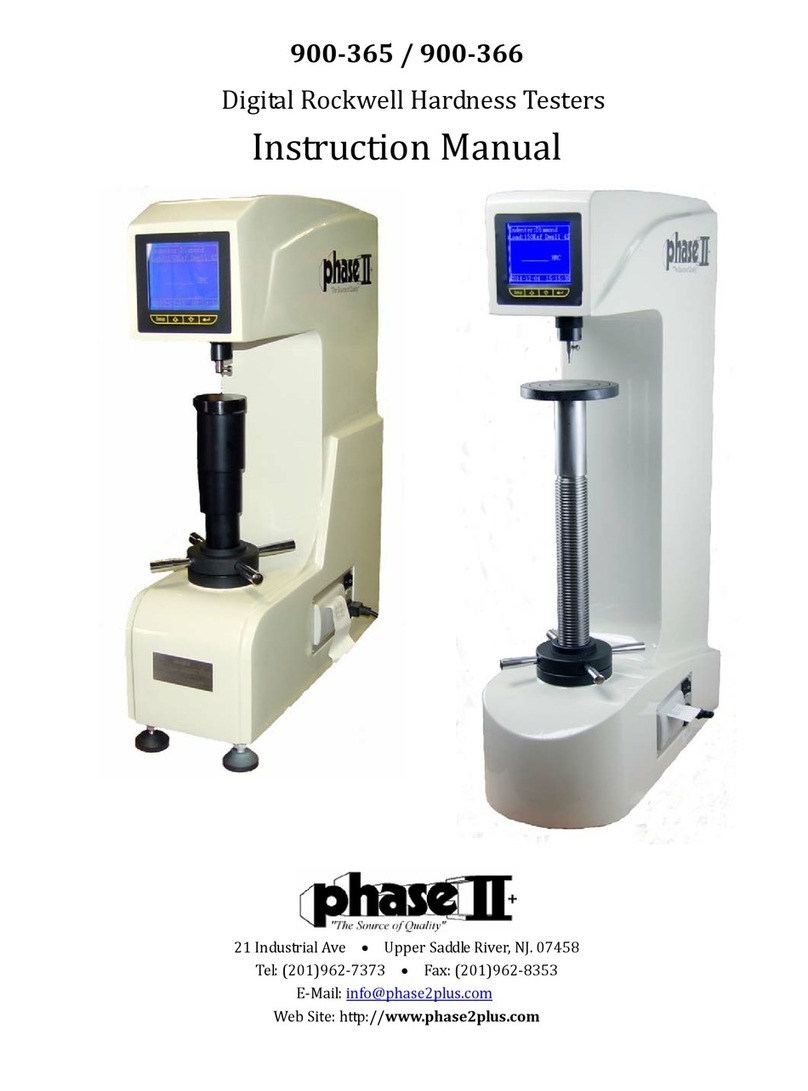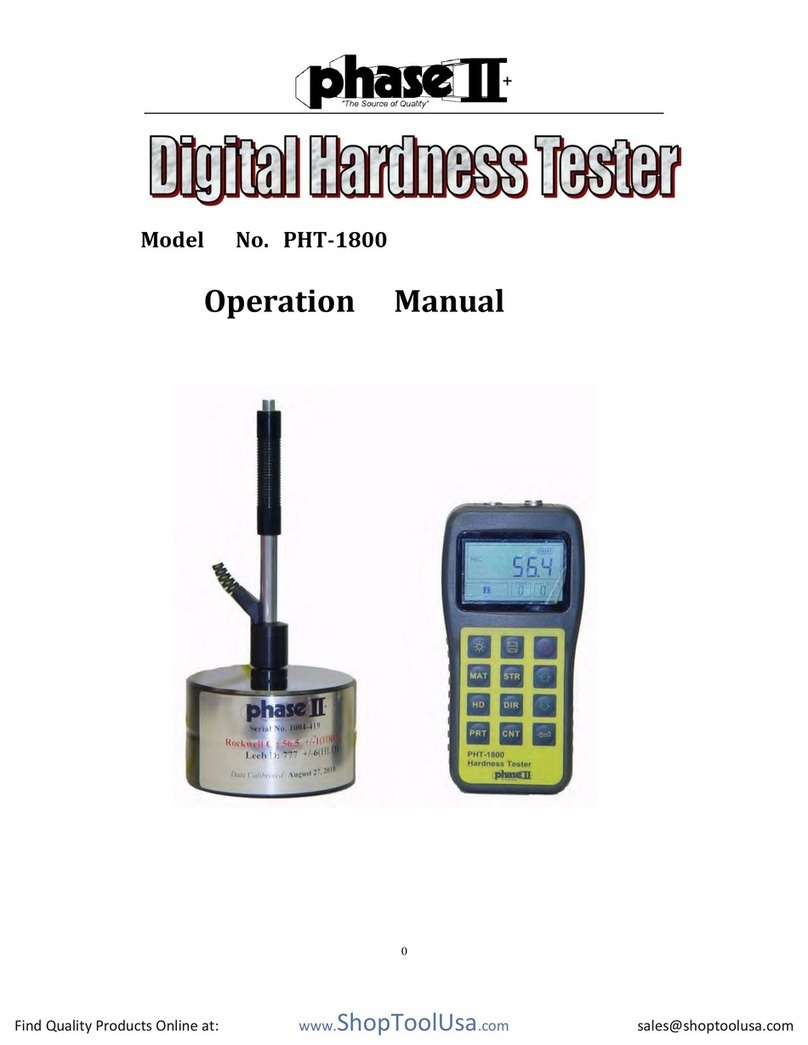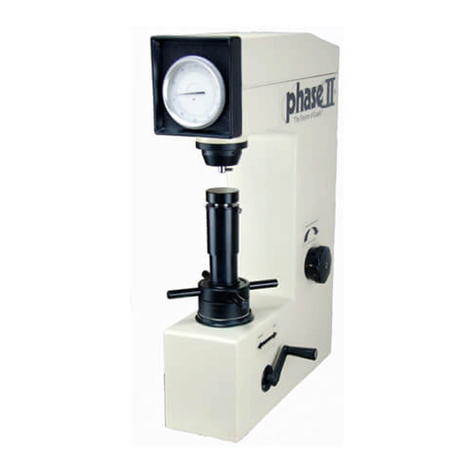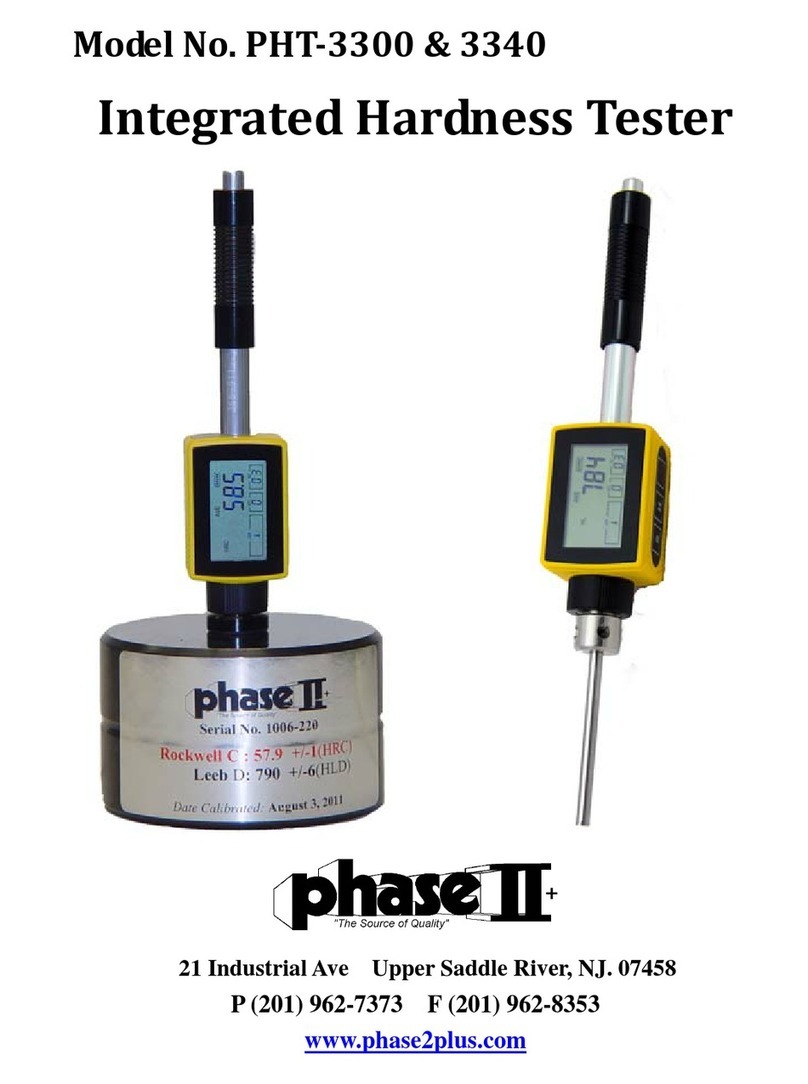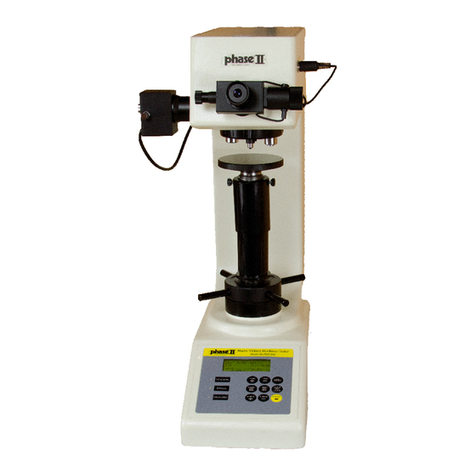
2
Dynamic Impact Device Type D Ultrasonic Transducer
Dynamic Testing Method information:
The Leeb measuring method was first brought into
measurement technology in 1978. It is defined as
the quotient of an impact body’s rebound velocity
over its impact velocity, multiplied by 1000.
Harder materials produce a higher rebound velocity
than softer materials. For a specific group of
material (e.g. steel, aluminum. etc.). Leeb hardness
value represents a direct relationship to its hardness
properties. For ordinary metal, conversion curves
of hardness HL versus other standard static
hardness (HB, HV, HRC, etc.) are available,
enabling you to convert HL into other hardness
values.
Leeb Hardness Test (definition)
An impact body with a spherical test tip made of
tungsten carbide is propelled against the sample
surface by a spring force and then rebounds back.
At a distance of 1mm from the sample surface, the
impact and rebound velocity of the impact body are
measured by the following method: A permanent
magnet embedded in the impact body, when
passing through the coil in its coil holder, induces
in the coil an electric voltage proportional to the
velocities of the magnet. Leeb hardness is
expressed by the following formula:
HL = 1000 x (VB/VA)
Where: HL is Leeb Hardness
VB is the rebound velocity of the impact body
VAis the impact velocity of the impact body
Ultrasonic Testing (UCI)Method information:
UCI method Ultrasonic Contact
Impedance, a hardness testing method
developed by Dr. Claus Kleesattel in
1961 based on the measurement of the
frequency shift of a resonating rod caused
by the essentially elastic nature of a of
the finite area of contact between the
indenter and the test piece during the
penetration.
In the mobile hardness test under applied
load according to the UCI method, the
size of the produced indents are not
determined optically. Instead the contact
area is derived from the electronically
measured shift of an ultrasonic resonance
frequency. To carry out the UCI test, a
probe containing the rod with the
indenter is excited into a longitudinal
ultrasonic oscillation of about 70 kHz by
piezo-electric ceramics- the so called
zero frequency, which occurs when the
indenter is vibrating in air. A spring
inside the probe applies the specified test
load, the vibrating tip penetrates into the
material creating an elastic contact,
which results in a positive frequency shift
of the resonating rod. This shift is related
to the size of the indent area. The size, in
turn, is a measure for hardness of the test
material at a given modulus of elasticity.


